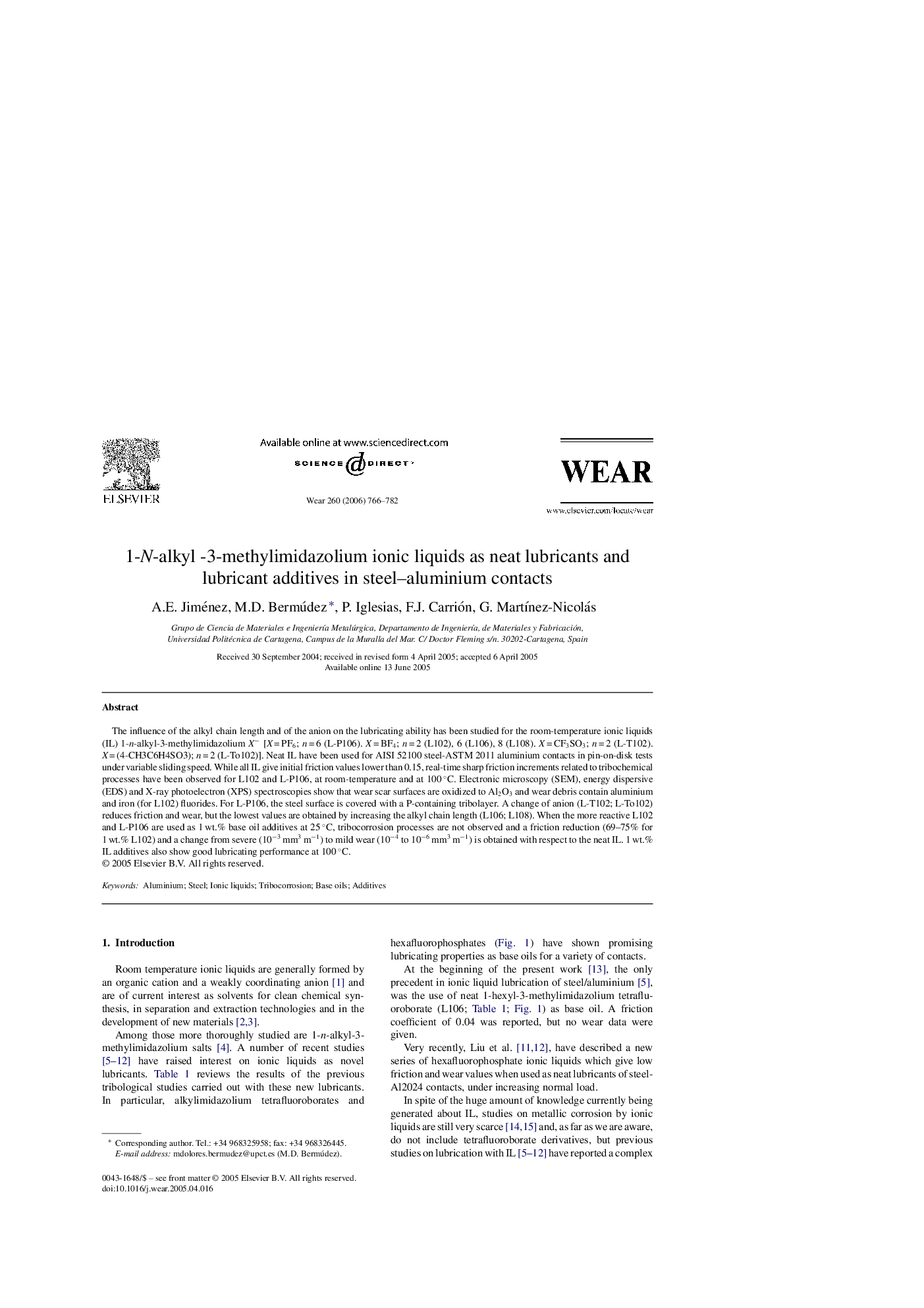| Article ID | Journal | Published Year | Pages | File Type |
|---|---|---|---|---|
| 620242 | Wear | 2006 | 17 Pages |
Abstract
The influence of the alkyl chain length and of the anion on the lubricating ability has been studied for the room-temperature ionic liquids (IL) 1-n-alkyl-3-methylimidazolium Xâ [X = PF6; n = 6 (L-P106). X = BF4; n = 2 (L102), 6 (L106), 8 (L108). X = CF3SO3; n = 2 (L-T102). X = (4-CH3C6H4SO3); n = 2 (L-To102)]. Neat IL have been used for AISI 52100 steel-ASTM 2011 aluminium contacts in pin-on-disk tests under variable sliding speed. While all IL give initial friction values lower than 0.15, real-time sharp friction increments related to tribochemical processes have been observed for L102 and L-P106, at room-temperature and at 100 °C. Electronic microscopy (SEM), energy dispersive (EDS) and X-ray photoelectron (XPS) spectroscopies show that wear scar surfaces are oxidized to Al2O3 and wear debris contain aluminium and iron (for L102) fluorides. For L-P106, the steel surface is covered with a P-containing tribolayer. A change of anion (L-T102; L-To102) reduces friction and wear, but the lowest values are obtained by increasing the alkyl chain length (L106; L108). When the more reactive L102 and L-P106 are used as 1 wt.% base oil additives at 25 °C, tribocorrosion processes are not observed and a friction reduction (69-75% for 1 wt.% L102) and a change from severe (10â3 mm3 mâ1) to mild wear (10â4 to 10â6 mm3 mâ1) is obtained with respect to the neat IL. 1 wt.% IL additives also show good lubricating performance at 100 °C.
Related Topics
Physical Sciences and Engineering
Chemical Engineering
Colloid and Surface Chemistry
Authors
A.E. Jiménez, M.D. Bermúdez, P. Iglesias, F.J. Carrión, G. MartÃnez-Nicolás,
